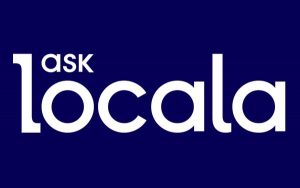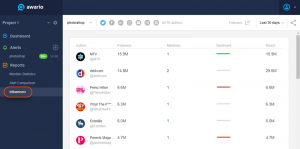Low conversions?
It’s tempting to start with your landing page.
Maybe that blue button should be a green one. Or perhaps the hero image ain’t hero-y enough.
But in reality, those things don’t really move the needle.
Instead, you should start with the ads that are sending people there in the first place. Because they set the tone and influence everything else – including what’s on those pages.
Here’s why, and how to get them to work together to deliver better results.
How to ‘Prime’ Customers to Increase Landing Page Conversions

Consumers today are overwhelmed by ‘stuff’.
You’ve heard it all before. All the stories and stats and figures.
The problem, though, is that too much ‘stuff’ can kill your conversions.
Columbia business school professor Sheena Lyengar proved this one day in a Menlo, California food market.
First, she set out a group of 24 jam varieties and noted the number of people who (1) visited the booth and (2) purchased. Then, she set out only six varieties and compared the same metrics.
Which group successfully attracted the most people to the booth? Turns out it was the larger sample size of 24 bottles.
Awesome. If consumer attention is today’s big struggle, and more products leads to more attention, let’s keep adding more products! Right?
Except…
Those people only purchased one-tenth of what the six-bottle group did. Choosing, it turns out, is cognitively stressful and can erode results.
How do you make it easier? (Without resorting to cutting down an unrealistically high percentage of your inventory?)
You ‘prime’ customers, which is a psychology concept that “refers to activating particular representations or associations in memory just before carrying out an action or task.”
How about in English?
Say “fire engine” to someone and they’re most likely to choose the color red. They’ve been ‘primed’ and that’s the first, natural choice that stands out.
Online, this comes into play when you successfully use ads to ‘prime’ people for what they’re about to see on a landing page. Or, in other words, ‘message match’.
How ‘Message Match’ Dictates Advertising Cost (And Results)
‘Message match’ is a fundamental conversion concept that refers to when the value proposition from an advertisement…

… aligns perfectly with the landing page that people see.

It makes perfect sense that proper message match can lead to a better experience and higher conversions. As we just saw, you’re ‘priming’ visitors for what they’re about to see to make sure their expectations match reality.
But message match can also lead to more cost-effective results, too.
For example, a single point increase in your AdWords Quality Score can drop your cost per click and conversion by 16% (according to Larry Kim’s analysis of $ 100 million in annual AdWords spend).

And one of the driving forces behind your Quality Score? Alignment of what someone’s searching for with the ad they see and the page they land on. Or, message match.
This same scenario plays out on Facebook ads, too, where there’s a definite correlation between a higher Relevance Score and lower Cost Per Click.

Continuity then, between your ads and your on-site offers, is critical. It ‘primes’ customers through message match so they’re more receptive to what you’re offering. With the added bonus of lowering out-of-pocket ad costs too.
The trick though, is to understand the intent behind what people are looking for. Create and test ads to match those things, and then simply adjusting your pages accordingly.
How to Start Segmenting Your Audience and Ads to Increase Landing Page Performance
The highest converting funnels segment people based on intent.
Example:
- Break-Even Funnel: Sells a low-priced product in order to build a large audience of verified buyers and ‘break-even’ on ad costs.
- Primary Offer Funnel: Your big ticket items that are sold to people who’ve already purchased the break-even funnel.
- Webinar Funnel: Nurtures people who’ve purchased the Break-Even Funnel product but not the Primary Offer one.
In practice, that means understanding the difference between someone searching for “TV reviews” in Google from another searching for “Samsung TV discounts”.

The “review” person is looking for one thing, while the “Samsung” one is obviously looking for something else. The same is true for Facebook interests. Or even people with different job titles (as we’ll see in just a second).
Digital Marketer’s excellent Ad Grid gives you an actionable framework for identifying these specific ‘hooks’ and creating more captivating ads for each specific customer type.

For example, the first (“10 Minute”) ‘hook’ focuses on speed and convenience while the second one (“Grade”) is concerned with quality.
Which is right? You don’t know until you test.
Here’s another example.

The Yes Girls help men plan the perfect wedding proposal. Their standard ad is direct and to-the-point:
But let’s say you want to test with a different hook to see if it will improve results.
You could try a zen one:

Or you could go negative and help people avoid common mistakes:

All sound good and are worthy of testing to increase conversions. But the point is, based on the power of ‘priming’ and influence of ‘message match’, you should focus on the value prop FIRST, and align your landing pages to them.
Your landing pages then can be more ‘templated’, allowing you to make fast changes based on the ‘variables’ you’re switching in-and-out above. For example, that could be different verticals like “attorneys”…

… from “physicians and dentists”.

Even though both people might be looking for the same thing (in this case, disability insurance), they have vastly different preferences, attitudes, and worldviews. And only after creating new ads can we then create, and align, those elements for each grouping.
A ‘templated’ landing page approach also means you can use a simple DIY option like LeadPages, which lets you choose from a variety of pre-made templates to edit (without touching a line of code).
Unbounce, another popular landing page optimization software, has a feature called dynamic text replacement that will automatically replace content based on the keyphrase someone just searched for. (This way you can avoid having to manually clone and update each individual landing page.)

When done correctly, this process is almost foolproof because you just react and adjust in real-time. For example, my company performed these same simple tweaks and changes during a client’s site redesign; lifting conversion rates from 4.08% to 12.76% and dropping Cost per Lead by 69.39%.

Conclusion
Making changes to specific landing pages can help. But barely. Or rarely.
Try focusing your attention to what people are searching for instead. Create different advertising hooks to better align your solution to their intent.
Then all you need to do is leverage ‘priming’ and ‘message match’ to take care of the rest. Use landing page software to ‘template’ and spin-off landing page variations that match your ads.
When you match the value proposition correctly, the results will take care of themselves.
Digital & Social Articles on Business 2 Community(73)






